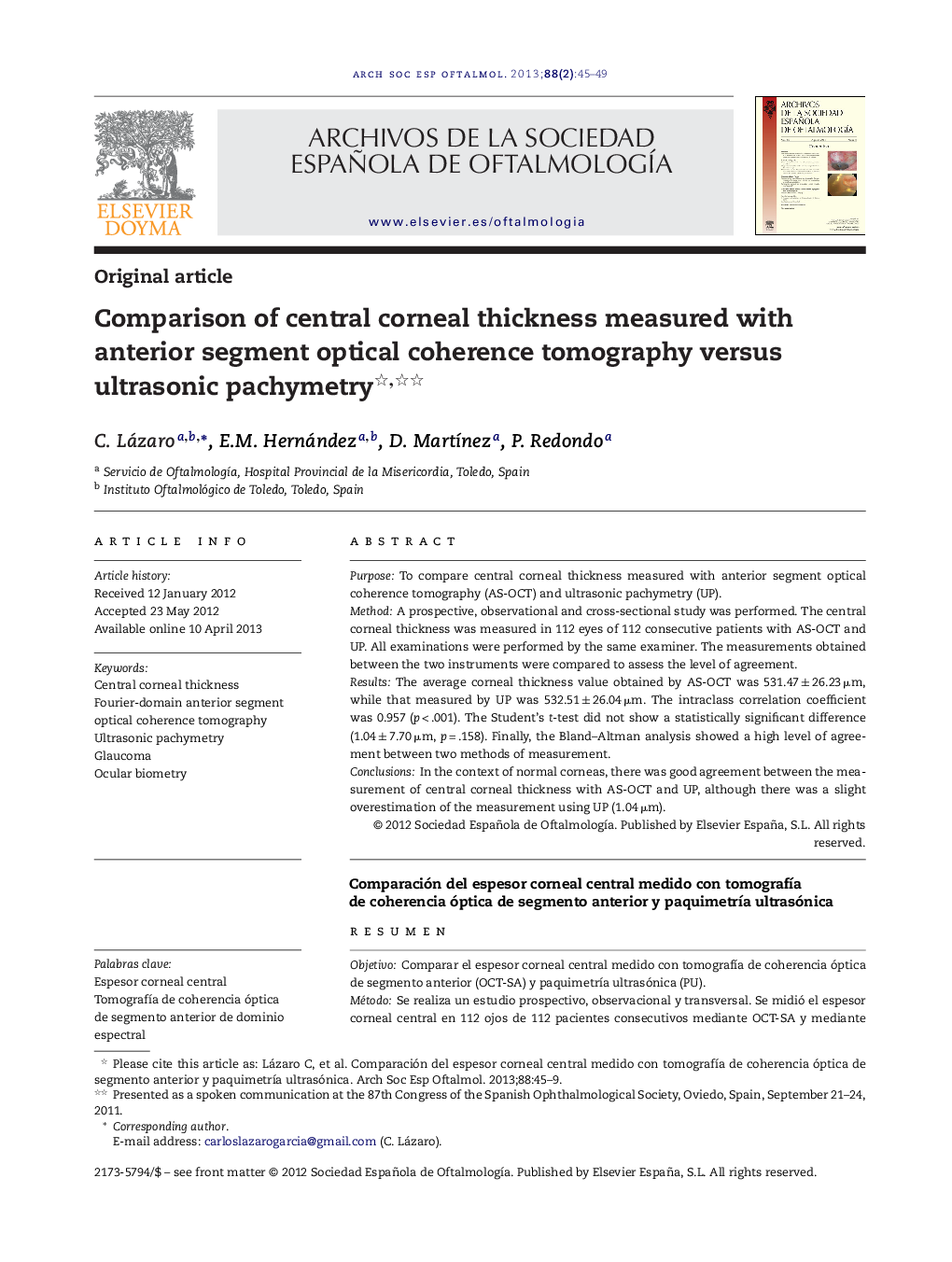| Article ID | Journal | Published Year | Pages | File Type |
|---|---|---|---|---|
| 4008476 | Archivos de la Sociedad Española de Oftalmología (English Edition) | 2013 | 5 Pages |
PurposeTo compare central corneal thickness measured with anterior segment optical coherence tomography (AS-OCT) and ultrasonic pachymetry (UP).MethodA prospective, observational and cross-sectional study was performed. The central corneal thickness was measured in 112 eyes of 112 consecutive patients with AS-OCT and UP. All examinations were performed by the same examiner. The measurements obtained between the two instruments were compared to assess the level of agreement.ResultsThe average corneal thickness value obtained by AS-OCT was 531.47 ± 26.23 μm, while that measured by UP was 532.51 ± 26.04 μm. The intraclass correlation coefficient was 0.957 (p < .001). The Student's t-test did not show a statistically significant difference (1.04 ± 7.70 μm, p = .158). Finally, the Bland–Altman analysis showed a high level of agreement between two methods of measurement.ConclusionsIn the context of normal corneas, there was good agreement between the measurement of central corneal thickness with AS-OCT and UP, although there was a slight overestimation of the measurement using UP (1.04 μm).
ResumenObjetivoComparar el espesor corneal central medido con tomografía de coherencia óptica de segmento anterior (OCT-SA) y paquimetría ultrasónica (PU).MétodoSe realiza un estudio prospectivo, observacional y transversal. Se midió el espesor corneal central en 112 ojos de 112 pacientes consecutivos mediante OCT-SA y mediante PU. Todas las exploraciones fueron realizadas por el mismo examinador. Se compararon las mediciones obtenidas entre ambos instrumentos para valorar el nivel de concordancia.ResultadosEl valor de espesor corneal medio obtenido mediante OCT-SA fue 531,47 ± 26,23 μm mientras que el medido mediante PU fue 532,51 ± 26,04 μm. El coeficiente de correlación intraclase fue 0,957 (p < 0,001). En el test «t» de Student no se observó una diferencia estadísticamente significativa (1,04 ± 7,70 μm, p = 0,158). Finalmente, el análisis de Bland-Altman mostró un elevado nivel de concordancia entre ambos métodos de medida.ConclusionesEn el contexto de córneas normales, la medición del espesor corneal central con OCTSA y con PU mostraron una elevada concordancia, existiendo una leve sobreestimación de la medida con ultrasonidos (1,04 μm).
